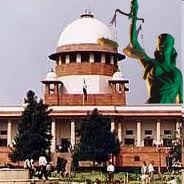





FAQ's
5. What is the 498a Discharge Procedure?
As soon as Chargesheet is filed and accused decide to file 'Discharge Application' then he has to follow the following steps :
1] Make application as advised above. You have to state 'Grounds' for discharge and show that no 'prima facie' case is made out. You can dowload Discharge Application form and Sample Discharge Form from this site.
2] This application need not be submitted on the date given for 498A case. It can be submitted on any day. Some courts have their own methods for handling it. In some court, a 'MISC' Mmiscellaneous case number is given and heard separately with separate set of hearing dates. In some court, it is heard under the same number of chargesheet case Criminal Case : C.C. No.. But under any method, the main 498A case is stopped till 'Discharge Application' is not disposed off.
3] One copy of 'Discharge Application' is given to PP in court at the time of filing original application for discharge in court. Court writes order on discharge application - 'PP to say'.
4] Now PP has to submit his say and he makes all drama of not submitting. Here accused can submit 'Pursis' to court on each and every date about 'PP' not submitting his/her say. Accused can make application to court that 'PP' has nothing to say and therefore not submitting his/her say and therefore, proceeding may please be continued without his/her say. Accused should not care for outcome of these exercise, but continuous pressure should be built on PP to give his/her say. Please note, without his/her say, matter will not move at all and therefore it is very essential to build a continuous pressure which normally advocates don't do.
5] After PP's say, accused has to make arguments. Accused can submit 'written argument' (with a copy to PP) and also make oral submission, both.Then PP has to make his/her argument. Again he may ask for adjournments for his/her argument and accused has to repeat pressure building tactics. Unless PP makes argument, matter will not proceed further. But 498A will remain in abeyance (on hold).
7] Then proceeding is completed. Magistrate gives order on discharge application - either acquittal OR dismissal of application.
8] Hereafter accused may choose either to go to 'Revision' or forget going ahead. Then charges are framed u/s.240 Cr.P.C. which accused shall contest fighting that how charges are not applicable. But no advocate fight for this. So in this manner accused get 2 opportunities. But due to this, trial is delayed.
Download 498a Discharge Citation from here.
Download 498a Discharge form from here.
6. What is the 498a Procedure after Charge Sheet is Filed?
1) On filing charge sheet, police sends summons or make telephone call to attend court to receive charge sheet, till such time - no need to attend court. However a tab shall always be maintained on chargesheet as many times police/court dont send information to accused at the time of filing chargesheet, but it does not harm accused except that precious time is killed.
2)At the time of receiving chargesheet which is given free of cost to 'each' accused by 'pp' in court, sometime court asks accused whether they are guilty, normally accused say - not guilty. Check the charge sheet - it is also called 'Final Report' - there should be a table showing list of witnesses and documents - many times it is not given, tell court for any discrepancy in it.
3)Then dates, accused must attend them or take exemption u/s205 of Cr.P.C. Charges are framed u/s240 Cr.P.C if the discharge application not made u/s239 Cr.P.C. When accused can oppose. Then First witness - wife - PW1 - PP asks question to her based on her complaint to take FIR on court record. Then accused's counsel cross examine her.Then her father, Mother, Sister etc. whomsoever I/O has taken as witnesses and taken statements - which are given with chargesheet to accused. Then I/O's examination-in-chief by PP and cross by accused's advocate (counsel).
5) With this, prosecution evidence closed. If accused has any witness, they can be called as defence witnesses. First accused's advocate will take examination-in-chief and then PP will take cross-examine.
6) Then accused are examined by magistrate u/s313 Cr.P.C.
7) Then PP gives argument, then accused's advocate gives argument.
8) Enjoy - Now order - acquited in case of acquital.Detailed written order is given after few days.
Pl. provide your suggestions/messages/Queries regarding this website to admin@advocateseema.in
Date:
Total Visitors












